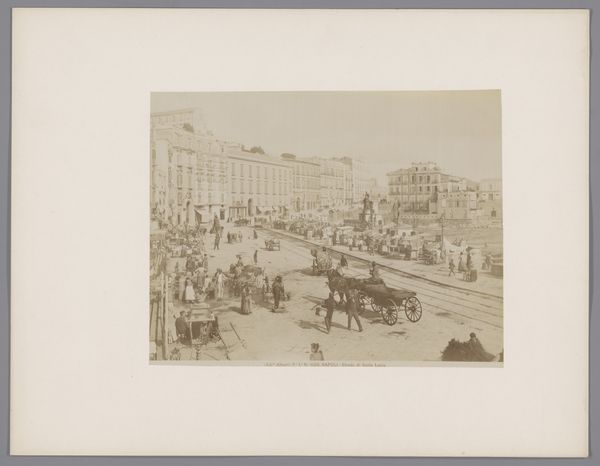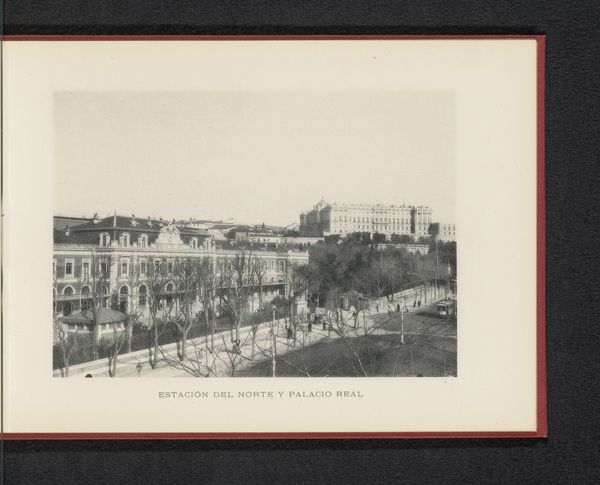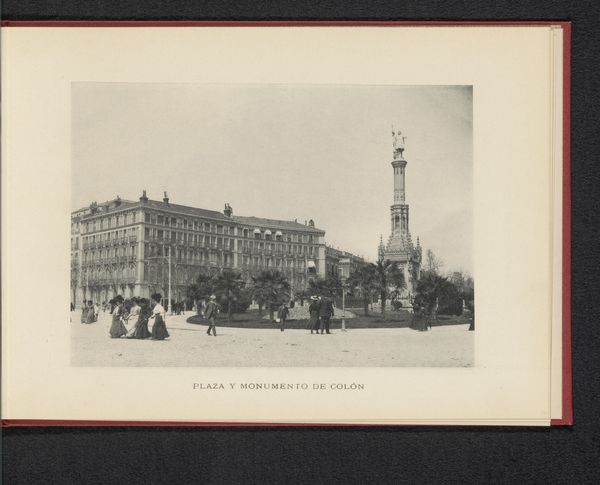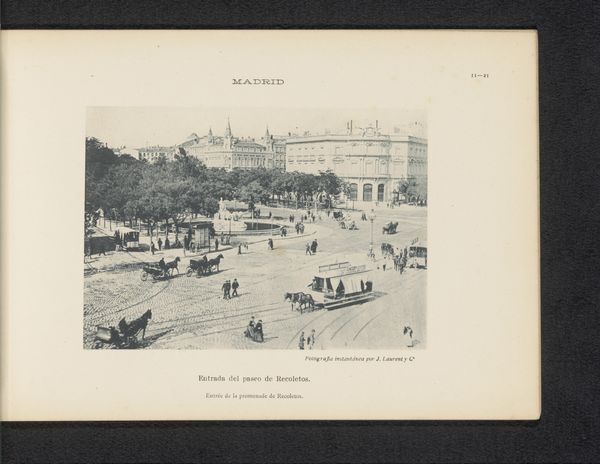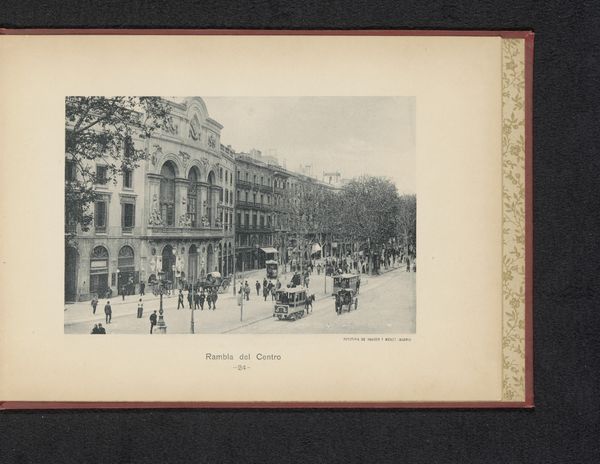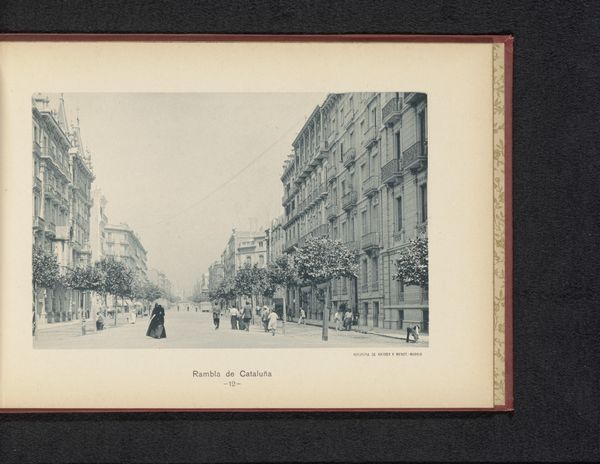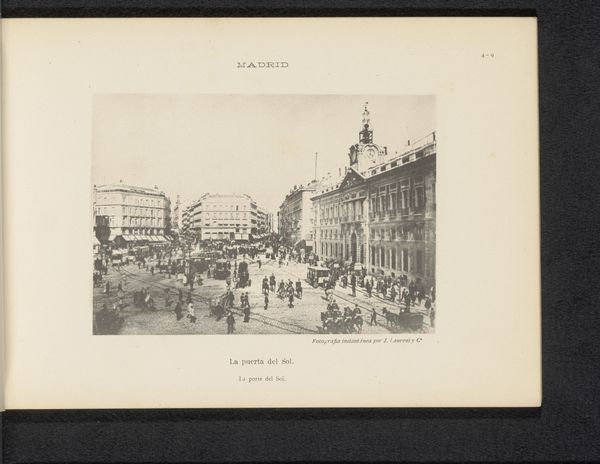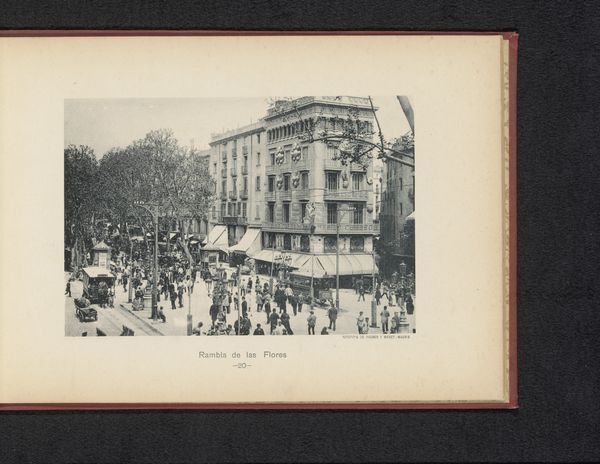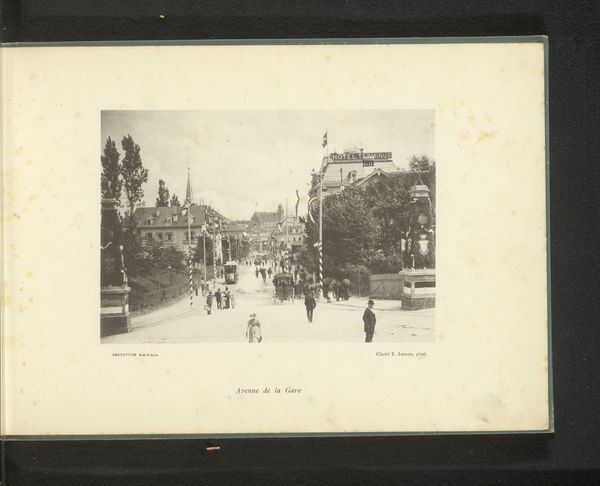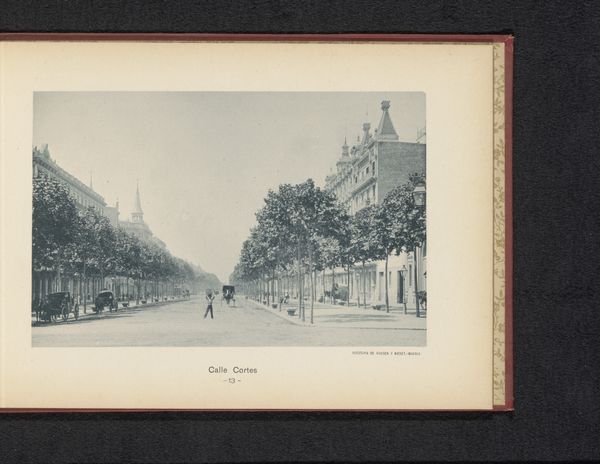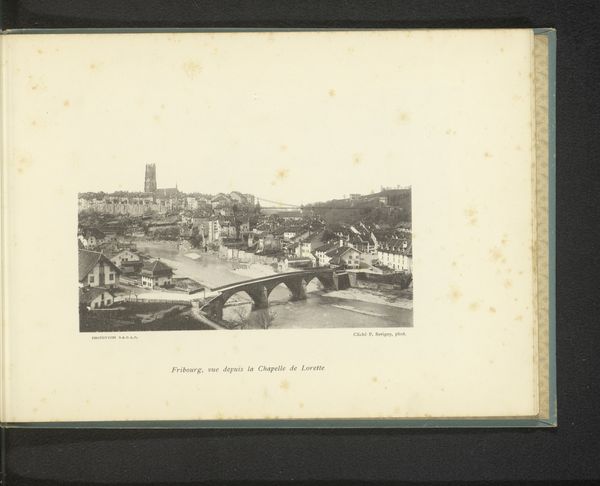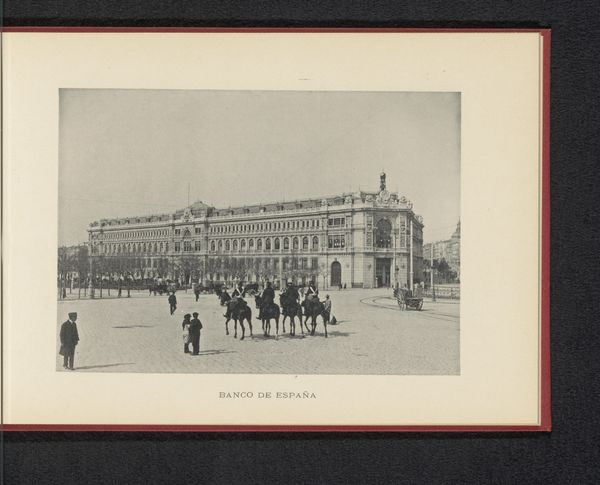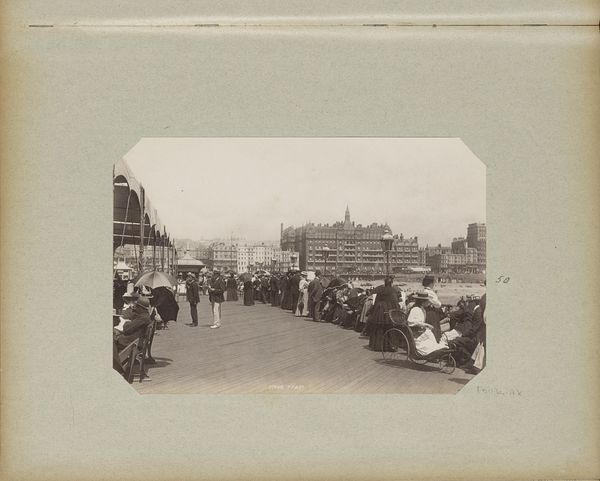
photography, gelatin-silver-print
#
pictorialism
#
photography
#
gelatin-silver-print
#
cityscape
#
street
Dimensions: height 115 mm, width 162 mm
Copyright: Rijks Museum: Open Domain
Curator: This is a gelatin silver print entitled “Gezicht op vermoedelijk de Paseo del Prado in Madrid,” or “View of probably the Paseo del Prado in Madrid,” created by Hauser y Menet between approximately 1888 and 1898. What strikes you most when you first look at it? Editor: It’s evocative. There's something dreamlike and melancholic about the scene. The monochrome palette and soft focus create a sense of nostalgia, or maybe of being slightly removed from the present moment. Curator: Absolutely. The soft focus characteristic of pictorialism gives it that effect, as if it's more painting than documentation. Gelatin silver prints allowed for a wider range of tonal variations. The manipulation involved in the development of this print is of interest here: consider the choice of paper and how it interacts with the image's tones. Editor: And think of who’s populating that tonality: men strolling along the promenade, figures blurred just enough to keep their individuality suppressed. I’m interested in how this public space shapes behaviors. Were there implicit social codes in how one moved or presented themselves here? It almost feels staged, a performance. Curator: Exactly! We have this manufactured sense of ease on display. How conscious was the photographer of framing that performative aspect, do you think? Also consider the physical production and dissemination of this image. Who was its intended audience, and what type of consumption was it catering to? Was this part of a larger project documenting Madrid? Editor: That’s a crucial point. Who had access to these images? What was the interplay between photography and constructing narratives of national identity? The Paseo del Prado was a space of both leisure and political display. This image suppresses tension, focusing on leisure, perhaps intentionally obscuring other aspects of the city's lived reality at the time. The rise of photography coincides with periods of social upheaval, offering carefully chosen and composed narratives to manage anxieties and shape perspectives. Curator: Yes, this highlights photography’s role beyond mere reflection—as a deliberate shaper of visual culture. The composition of this work, its texture, its contrasts of dark and light, is all meticulously crafted. The labor required to achieve such specific manipulation is crucial. Editor: Definitely. And looking at it now, it spurs us to consider the legacy of pictorialism—both its artistic ambitions and its underlying ideologies—and how we grapple with historical visual representations of urban space and collective identity today. Curator: Indeed. By analyzing the materials and production techniques, we start to get at the societal intentions and effects this image might embody.
Comments
No comments
Be the first to comment and join the conversation on the ultimate creative platform.
